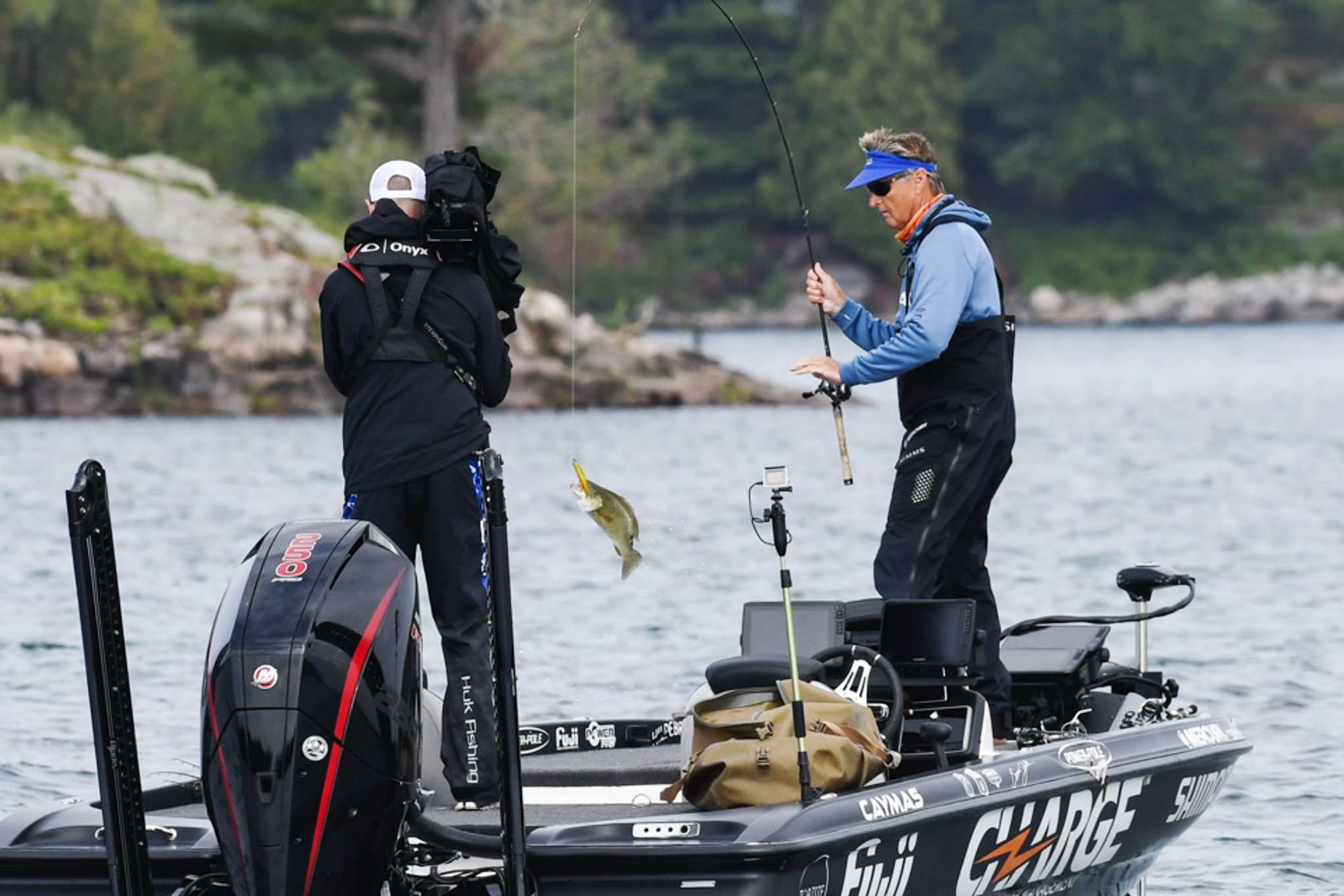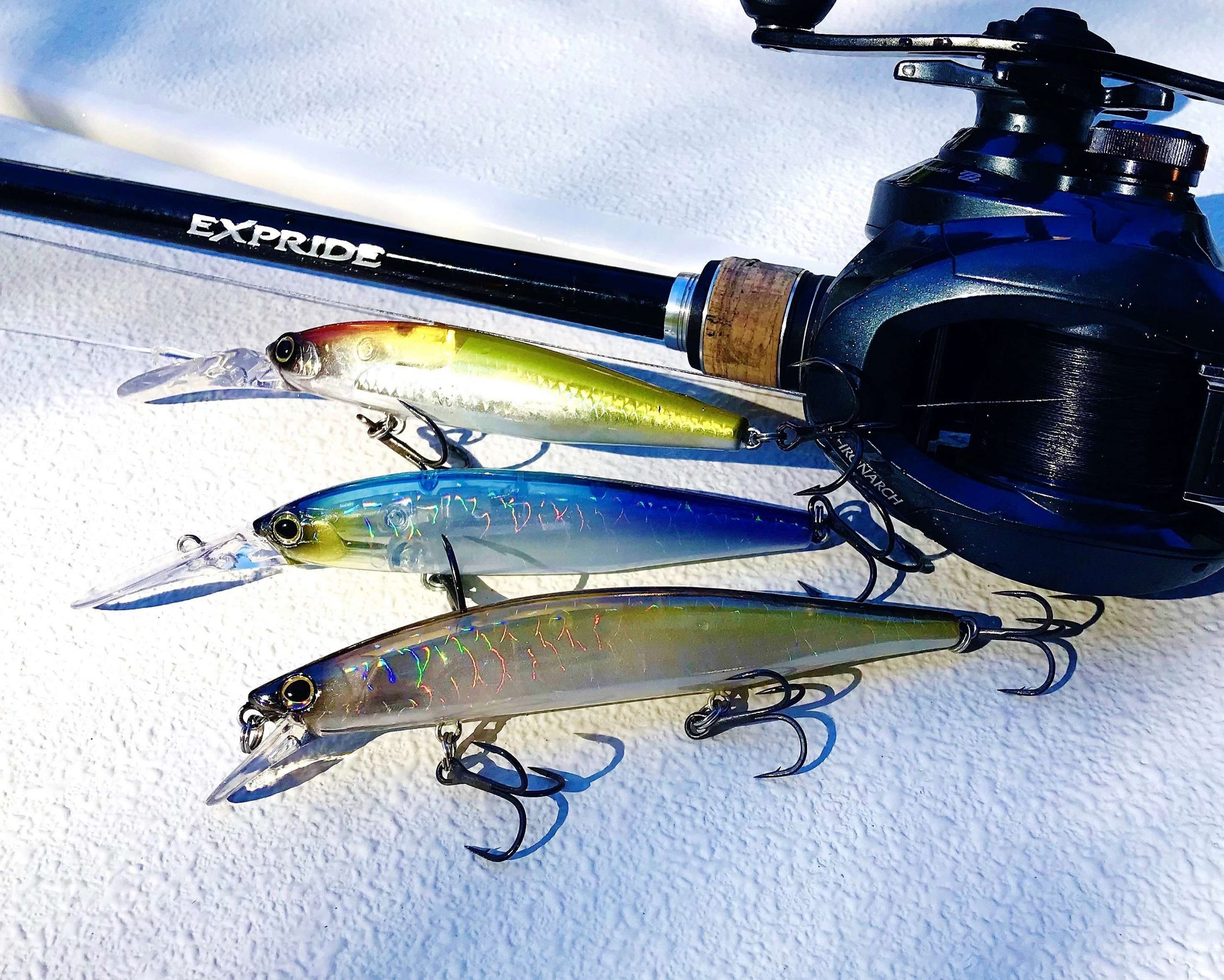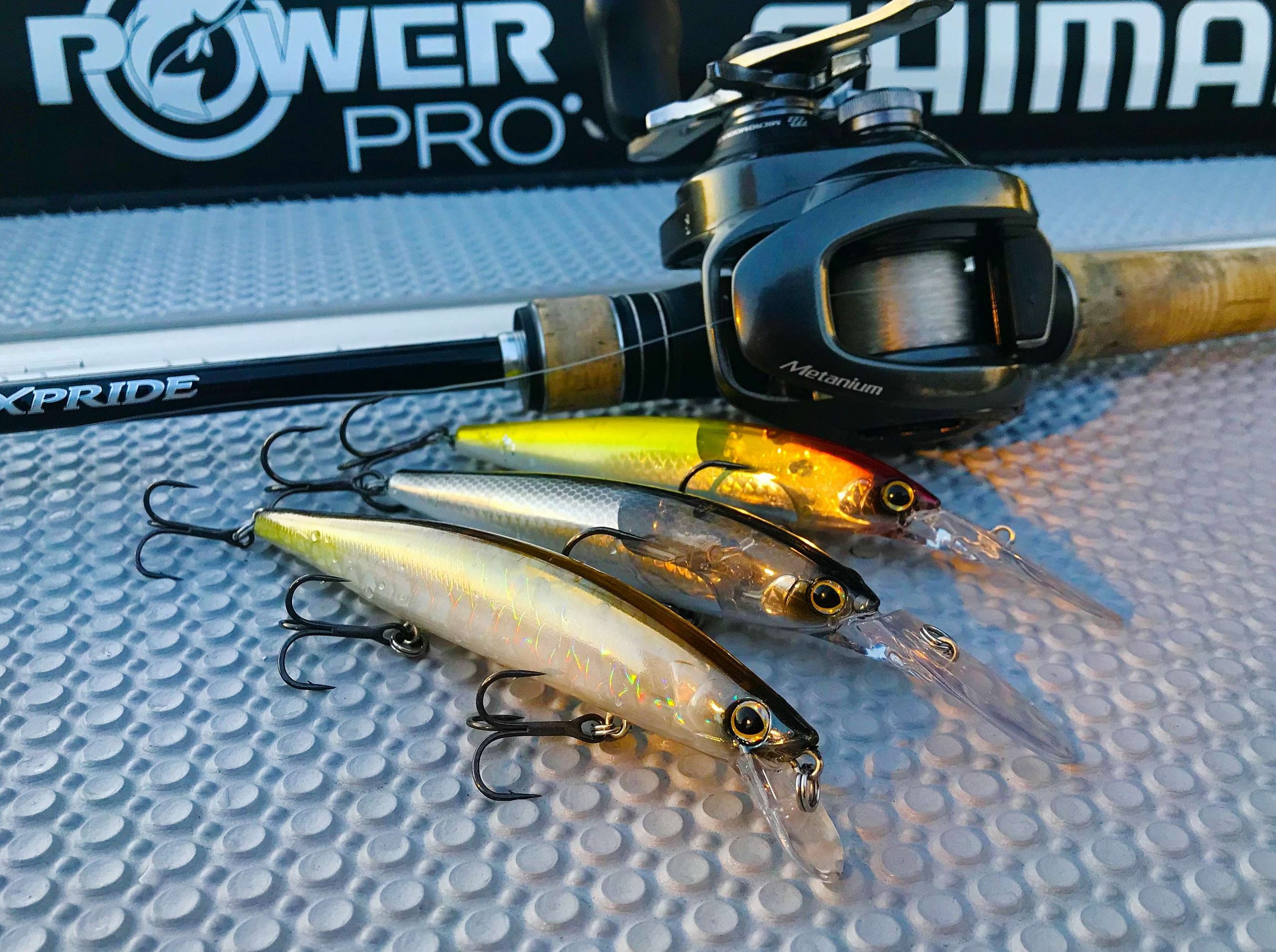
Quiz any hardcore basser on the best season for throwing a jerkbait and he’ll tell you it’s winter — guaranteed. It’s a shared belief, especially among those who fish waters that lend themselves to the technique.
As air and water temperatures plummet, bass begin to change their habits. They’re no longer interested in chasing baitfish on the surface — at least not for extended periods. Instead, they’re beginning to seek out places of comfort to weather the harsh conditions ahead. Those zones might include steep bluff banks, like those found on highland reservoirs, or deep weed edges in natural lakes. Another possibility could be canals or backwater holes on rivers where current is slack.
Wherever the fish go to winter, it’s usually in numbers. And a jerkbait can make them bite … provided you’re zeroed in with the right balance of tackle and the correct lure.
Setting the stage
Let’s assume we know where the fish are located and the depth they’re holding in. The next step is to choose the appropriate jerkbait — one that can reach that depth and coax them to bite. Remember, we’re talking super-chilled water and lethargic fish, so not just any minnow-shaped lure will do.
You’ll want something you can put in front of them that will force a strike.
Suspending jerkbaits will do that. They can remain in the strike zone indefinitely, and the longer they’re in front of the fish, the more likely they’ll be eaten.
There are countless suspending jerkbaits on the market, and most will catch fish. But if you’re looking for something different — something the fish have never seen — consider the World Minnow and World Diver by Shimano. These new lures feature “Flash Boost” — a thin reflective strip that flickers continuously, even when the lure is at rest. They make the lure shimmer, just like a real baitfish.
When the lure is jerked or twitched and then comes to rest, the flash feature continues to pulse and attract fish that may or may not be in the mood to feed.
I discovered the effectiveness of the World Minnow during the St. Lawrence River Elite Series tournament last July. Over four days of competition I weighed in 80 pounds of smallmouth bass — a 4-pound average. And I’m convinced that the World Minnow’s erratic, side-to-side movements combined with its Flash Boost feature made the difference.
Other features of the World Minnow and World Diver include “Scale Boost” and “Jet Boost,” which increase reflectivity and improve casting distance, respectively. Jet Boost refers to the lure’s weight transfer system, which is controlled by a spring mechanism. As the lure is cast, the weight travels toward the tail section. When the lure is pulled beneath the surface, the spring adjusts the weight’s position so that the lure assumes the perfect attitude throughout the duration of the retrieve.

At the time of the St. Lawrence tournament, I wasn’t at liberty to share any of this because the World Minnow had not yet been released. Now it’s out and available to the public, and I’m excited to tell you about it, because it’s making a positive difference in my fishing.
Balance is key
Whatever your jerkbait preferences may be, you’ll need the right balance of tackle to make them work to their fullest potential.
Most who are proficient in the technique prefer medium-action casting rods in lengths of 6-foot-6 to 7-foot-2 paired with low-profile, medium speed reels.
My ideal setup for most situations is the Shimano Expride EX1610MA (6-foot-10, medium action) paired with either a Metanium MGL III, Chronarch MGL or Curado DC baitcasting reel, all in mid-speed gear ratios. These combinations provide ease of casting, even in a brisk, head-on wind. They also fit comfortably in my palm for hours of casting and repetitious retrieves.
Although the usual preference is for baitcasters, spinning tackle will also work … particularly with smaller lures. With the right balance, you’re able to cast featherweight jerkbaits into the wind with increased distance and accuracy. Again, 6-foot-10 to 7-foot-2 rod lengths in medium actions are best. Pair them with 2500 to 3000 size reels. A solid setup is the Expride EX2610M with a Nasci, Vanford, Sustain or Stella spinning reel — each offered at a price point to accommodate any budget.
Regardless of the type of setup, I’ll spool up with 8-, 10-, or 12-pound fluorocarbon line. The smaller the diameter, the deeper the lure will travel. However, don’t base your choice solely on depth. The type cover you’re fishing should also be considered. If you’re fishing open water with very few snags, you can get away with lighter line … and you’ll probably get more bites. But if you’re dealing with standing timber, weeds or brush, heavier line will ensure a better catch ratio.
It’s a bit of a tradeoff, so weigh the costs.
In their face
Assuming we have the right balance of tackle, it’s now a matter of getting the bait in front of the fish. The first consideration is making sure your lure can achieve the desired depth, either at or slightly above that of the fish. Once that’s determined, begin with a lengthy cast beyond your target area. As the lure reaches a reasonable depth — after a few cranks on the reel or a long, steady pull of your rod tip — you can start the retrieve.
I recommend two sharp, downward jerks of the rod tip, then a pause. Jerk twice more, then pause again. Repeat this cadence all the way through the target area. The length of time between pulls and pauses will largely depend on the water temperature and mood of the fish. If it’s really cold and they appear to be super lethargic, then you’ll want to let the lure soak in the strike zone — sometimes for 30 seconds or more.
I recall a wintertime B.A.S.S. event on Lake Pickwick in Alabama, where “dead-sticking” a jerkbait proved invaluable. A brutal cold front had passed through and the water temperature plummeted as a result. When I returned to the areas where I had found fish, I quickly realized they were not in the mood to chase. Having nowhere else to go, I opted to slow my retrieve … to almost glacial speed.
That’s when things started to click.
I caught two 8-pounders, along with a number of other quality fish in that derby, most by fishing a jerkbait ultra-slow. When the final day weigh-in concluded, I learned the winner was using the exact same technique. It might work for you, too, if you’re out on a brutally cold day this winter.
Too often, we’re more concerned with making jerkbaits flash and dart rather than considering those crucial moments between pulls. By pausing the retrieve for extended periods, many more strikes can result — especially if you have one that will continue to flicker and flash like the World Minnow or World Diver. They keep working even when they’re at rest.
Follow Bernie Schultz on Instagram, Facebook and through his website.






